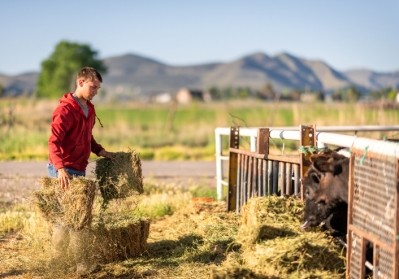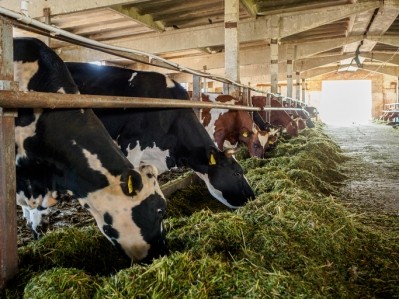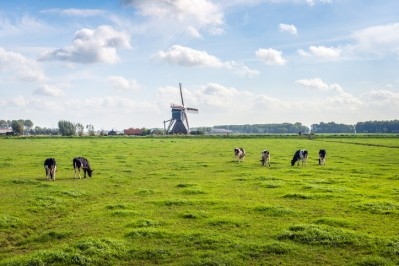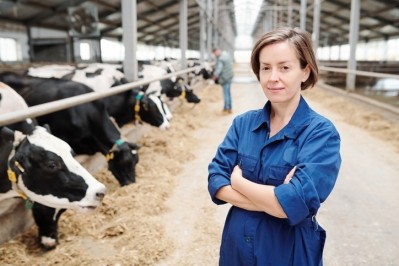Dutch government scraps divisive feed measure
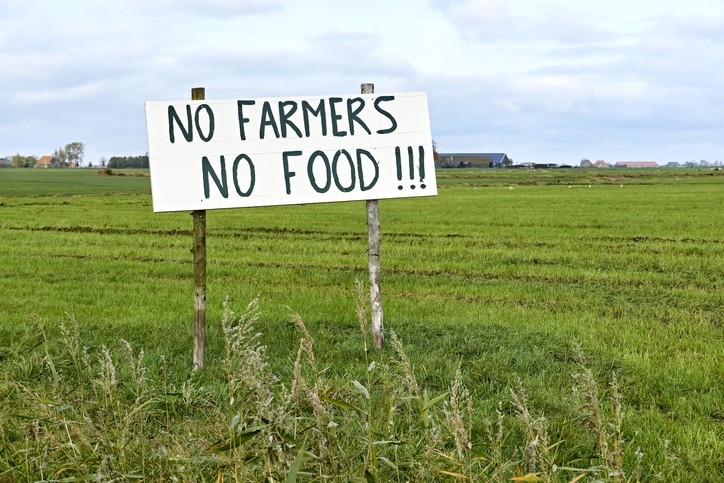
A proposal by the Dutch Ministry of Agriculture, Fisheries and Food Quality to limit the addition of proteins in feed concentrates for dairy cattle in an effort to reduce Dutch nitrogen emissions led to strong opposition from the farm sector.
In May 2020, Dutch Agriculture Minister, Carola Schouten, announced that she intended to temporarily limit the use of proteins in feed as of September 1, until the end of 2020, in order to attain a reduction of 0.2 kilotons in nitrogen emissions. Through this measure, the ministry hoped to create space for the construction of 75,000 new homes this year, which would also generate emissions.
In the end, however, the ministry elected to scrap the feed measure due to a recent period of drought in the Netherlands, noted a US Department of Agriculture (USDA) GAINS report.
“Researchers from Wageningen University indicated that this year’s precipitation deficit has led to a shortage of fresh, protein-rich pasture grass across the Netherlands, one of the most important components of a cow's diet. Now that cows are getting less protein from eating grass, the protein content in concentrates must be increased in order not to endanger the health of the cows. The effect of the ministry’s feed measure would therefore be nullified. As a result, Minister Schouten announced she would no longer pursue the implementation of the ministry’s proposal.”
Dutch dairy farming by the numbers
The feed measure was one of the proposals put forward by an external advisory committee that was tasked last year by the Dutch ministry of agriculture to look for ways to reduce nitrogen-based pollution in the Netherlands after the highest court in the country, the Council of State, ruled that the government had to reduce emissions in order to meet its climate goals.
The Netherlands is home to 16,260 dairy farms whose inventories total 1.6m dairy cows and calves. Combined, the dairy farms maintain 1.1m hectares of grassland, equivalent to 28% of the Dutch land surface, according to data compiled by the USDA authors.
The volume of milk that an average cow in that market produces has increased significantly over time - from 6,000 liters 35 years ago to 9,000 liters per year now. Increasing per-cow milk production was largely made possible by adjusting cows’ diets. In recent years, Dutch farmers have been providing greater volumes of feed concentrate to their animals.
“Currently, feed concentrate accounts for roughly one-quarter to one-third of a cow’s diet in the Netherlands,” found the USDA publication.
The rest of the feed is composed of roughage such as grass, grass silage, hay, and maize.
Controlling nitrogen emissions
Nitrogen is more difficult to control than phosphorus levels on dairy farms, due to the gaseous losses and external influences, factors such as weather conditions, the type and quality of forage used on the individual farms, the soil on that farm, and how a dairy holding is run, Henk Flipsen, director of the Dutch feed industry association, Nevedi, told us in May 2019.
Culling previously helped the dairy sector to meet the phosphate reduction targets, but a decrease in nitrogen output will require another line of attack: “The nitrogen issue is not just about how many cows a farm has. It has much more to do with farm management, so it is more complicated [than phosphate reduction]," said Flipsen.
His association has long argued that lowering the protein content in feed concentrates is not effective nor sensible.
Opposition to the government’s feed measure
The Netherlands Agricultural and Horticultural organization (LTO) argued that the proposed feed measure put pressure on farmers and was being done to create “space” for other sectors such as the construction sector.
LTO expressed disappointment that the Dutch government and the agricultural sector were not able to come to a mutually agreeable solution.
Similarly, the Dutch Dairy Association (NZO) noted that the feed measure proposed a generic prescription while taking insufficient account of company-specific circumstances. It noted that the future-proofing of agriculture requires long-term goals and accompanying regulations.
Subsequently, the Dutch dairy sector decided to develop its own proposal to reduce nitrogen emissions at the farm level. The sector’s plan, endorsed by multiple sector organizations, focused on the total protein consumption per farm, for which it aimed to achieve a 3% reduction. The sector suggested this reduction be calculated based on the amount of protein that a farmer had fed his animals during the second half of calendar year 2018.
Under the sector’s proposal, livestock farmers would still be permitted to provide protein-rich feeds to their animals, enabling farmers to modify feed for vulnerable cattle, if needed.
The dairy sector argued this was particularly important for feed rations using a relatively large amount of maize because, in these instances, a protein correction is necessary with a concentrated feed such as soybean meal or rapeseed meal. In the ministry’s plan, these supplementary feeds may be supplied via mixtures, but only if the protein content of those mixtures remains below the proposed limits.
Minister Schouten noted that the sector’s proposal would be impracticable since it would require each farm to draw up an individualized plan that would then have to be approved and reviewed, which would be too time consuming for the ministry. Consequently, she decided to dismiss the dairy industry proposal, according to the USDA GAINS note.
Environmental assessment of proposals
The Dutch parliament then demanded an external assessment of the situation.
Following the dismissal of the sector’s proposal, some parliamentary minsters directed the Minister to have it evaluated by the Dutch Environmental Assessment Agency (PBL).
As a result, PBL was asked to study three distinct proposals: the proposal from the ministry, the sector’s proposal, and a combination of both, noted the USDA.
On August 21, PBL published the results of its assessment. According to those findings, the feed measures that have been proposed by the ministry and the dairy sector are surrounded by too many uncertainties. As a result, PBL questioned whether the intended nitrogen reduction could be achieved through either proposal.
So what’s next?
To allow for the construction of houses and roads to continue this year, the Dutch Cabinet has indicated it would like to use part of the nitrogen gains from another measure: the voluntary buy-out scheme for swine farmers.
